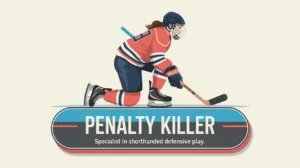Jim’s Intro to Elbow Pads
Hi folks, Jim here, the only commentator who once wore elbow pads under his suit jacket to look more muscular for a desk job interview.
What are elbow pads?
Elbow pads protect one of the most vulnerable and frequently battered joints in hockey. They cover the elbow and parts of the forearm and tricep, shielding against falls, slashes, blocked shots, and contact with the boards. A good pair fits securely around the elbow joint, locking in place so the pad doesn’t twist or slide during play.
How do they work?
Elbow pads use a combination of hard caps, soft foam, and straps to keep the joint safe.
- Elbow Cap: A hard shell that absorbs direct impact when players fall or collide.
- Forearm and Bicep Padding: Foam panels protect surrounding areas from sticks and pucks.
- Strap System: Keeps the pad centered on the elbow and prevents rotation during movement.
When fitted correctly, the elbow sits snugly in the cap, with padding extending smoothly up and down the arm for complete coverage.
How do you make good decisions with them?
Fit is everything. Poorly fitted elbow pads are notorious for slipping or leaving gaps.
- Size: Pads should cover from mid-bicep to mid-forearm without restricting movement.
- Elbow Position: The elbow must sit securely in the cap. If it shifts easily, the pad is too big or too loose.
- Straps: Should be snug but not cut off circulation. Looseness leads to sliding during falls or checks.
- Mobility: Make sure arms can fully extend and bend without pinching or shifting.
- Condition: Cracked caps or compressed foam reduce protection and should be replaced.
How do you master them?
Players get comfortable with their elbow pads through repetition. Over time, they learn the exact strap tightness and positioning that keeps the pads locked in without discomfort. The goal is to make them disappear into the gear setup so that elbow protection never crosses the player’s mind mid-game.
What does it look like when done right?
Properly fitted elbow pads stay locked in place no matter how hard the fall or hit. Players bend and extend their arms naturally, and the pads don’t twist or slide. The elbow is fully protected through every motion.
Commentator’s Corner
Jim’s Take
I’ve seen more elbows hit the ice than pucks. A loose pad can turn a fall into a big problem.
Parent Tip
Check that the elbow sits securely in the cup and that padding overlaps cleanly with shoulder pads and gloves. Gaps lead to bruises.
Player Tip
Dial in your strap tension before each game. Once you find the sweet spot, keep it consistent to avoid mid-shift adjustments.
A Final Thought
Elbow pads aren’t flashy, but when they fit right, they save you from some of the hardest, most awkward hits in hockey.









